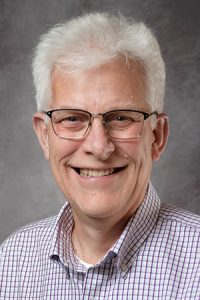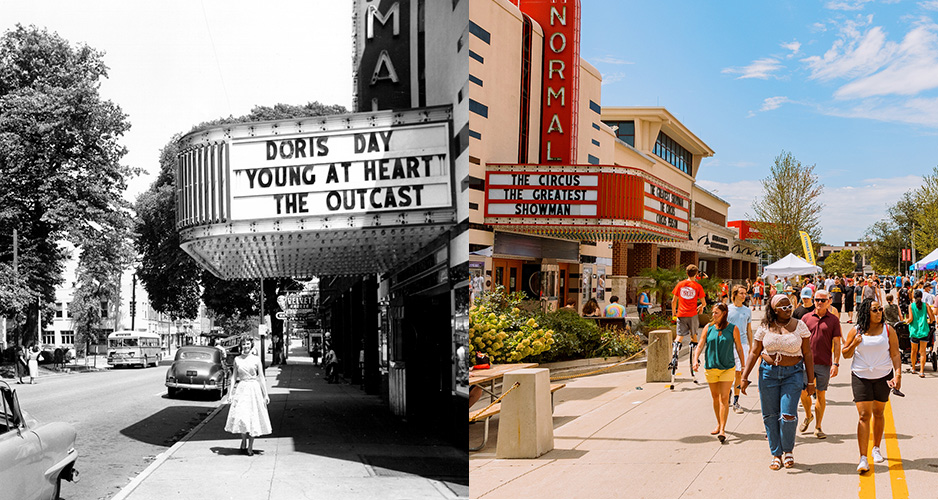Uptown Normal raises the bar on what’s possible in urban redevelopment
At its simplest and most functional, Normal’s Uptown Circle resolves a troublesome intersection of streets in the town’s historic business district.
As a symbol of progress, the Circle is the dot on an exclamation mark punctuating nearly 25 years of change. It has drawn praise and people, won awards and breathed new life into the oldest part of this town of 54,000.
Now the town is poised to expand its highly successful urban renewal effort to “the other side of the tracks,” continuing the journey from an unremarkable business district to a connected hub of local pride and regional activity.
Leveraging Location
Chris Koos, Mayor of the Town of Normal since 2003, has been around to see and lead much of the transformation of Uptown Normal. He said it got started in 1999, when the Town Council reached a critical decision.
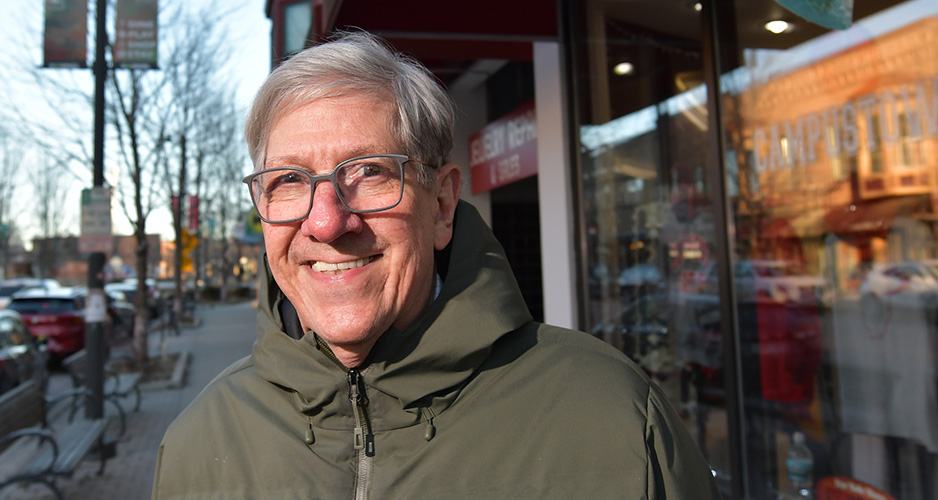
“The discussion was, ‘Should we do something in the downtown area, and if we do, should we just tidy up a little or go for significant change?’” Koos recalls.
At the time, the downtown area had long-term businesses such as The Garlic Press (opened in 1976) and Shorty’s Barber Shop (established in 1922), the student bars and eateries typical of college towns, and a lot of what Koos calls “revolving door buildings” — low-rent addresses where start-ups often closed or relocated in two or three years.
A master plan from Farr Associates in Chicago was approved with strong support from the Town Council. Downtown was rechristened Uptown Normal and the wheels of redevelopment were set in motion.
“The idea was to leverage our location next to Illinois State University … make it more pedestrian friendly, less oriented to the automobile, more walkable, and generate an environment where business can thrive,” said Koos.
Farr Associates’ master plan included many of the features that distinguish Uptown today: a traffic-calming, pedestrian- and bike-friendly plaza, a multi-modal transportation center, government offices, a mix of old and new retail and upscale residential. The plan was approved in 2001, and the first major project, the Children’s Discovery Museum, opened its doors in 2004.
“We wanted to showcase our expectations for redevelopment of this area,” Koos said. “The building was designed to house a world-class museum, but it also demonstrated what we thought the look for the new area should be.”
In the Middle of Everything
Museum Executive Director Beth Whisman said the facility has come to be seen as the “unofficial welcome center of Normal,” averaging some 140,000 visitors annually.
“We’re here in the middle of everything,” she said.
The building itself was constructed by the town, which continues to own and operate the facility, while the Children’s Museum Foundation raises funds for scholarships, exhibits and programming.
“We’re proud to be a flagship of Uptown as it is today,” Whisman said.
Another Uptown anchor, the Marriott Hotel and Carol A. Reitan Conference Center, came on line in 2009. Just across the street is the Hyatt Place Hotel. Together they add hundreds of rooms and meeting space to the central business district where none had been before. It means thousands from near and far come to Beauford and North Streets to find coffee shops, a comic book shop, vintage music stores, an Irish pub, numerous homegrown restaurants, a brew pub, gift shops and more.
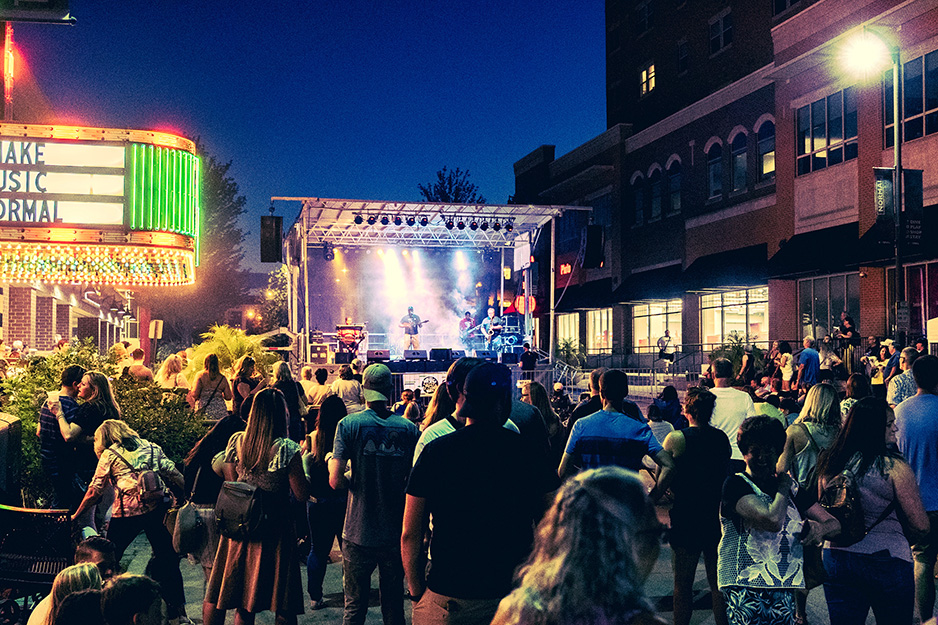
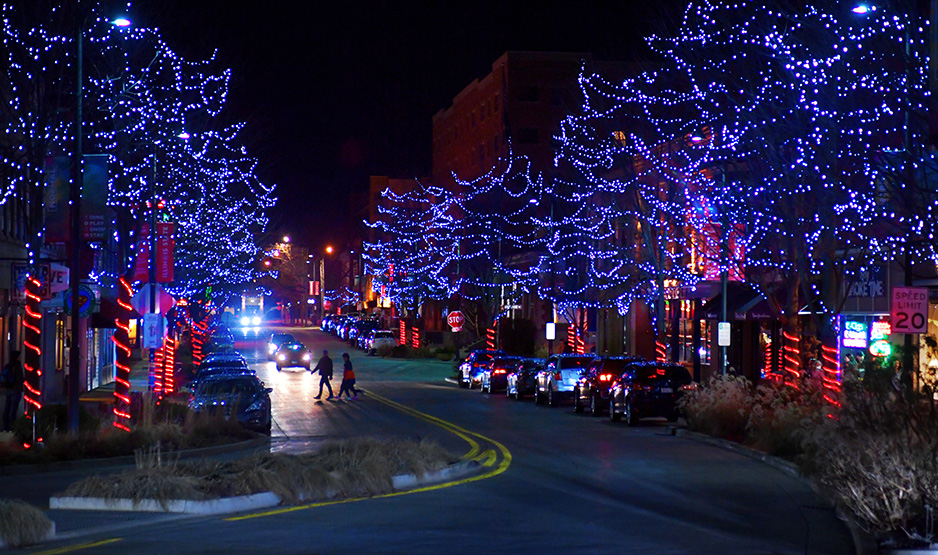
At Uptown Station, Amtrak offers four trains north and south daily. Travelers and locals can park their bike, catch a bus or taxi, or charge their electric vehicle in the parking deck. On the first floor of the deck is the University Galleries, a premier exhibition space for contemporary art. All new construction over 7,500 sq. ft. must meet LEED (Leadership in Energy and Environmental Design) standards. Five buildings are LEED Silver certified.
Wayne Aldrich, who served as Uptown Development Director until his retirement in 2021, said the plan came together because there was solid support from the Town Council, plenty of public input and a consistent leadership vision.
“It was a team effort. The Council was solid behind it and we found the funding,” Aldrich said. “There was a vision and we were able to stick to that vision.”
The Garlic Press is one business that has seen “almost every version of downtown that there has been” in the last 50 years, according to Sarah McManus, co-owner and daughter of founder Dorothy Bushnell. Established in 1976, the cookware, popcorn and creative living boutique has witnessed the entire transformation of the business district.
“We’re looking forward to more development on the horizon,” McManus said. “We’re going to survive it and make it work.”
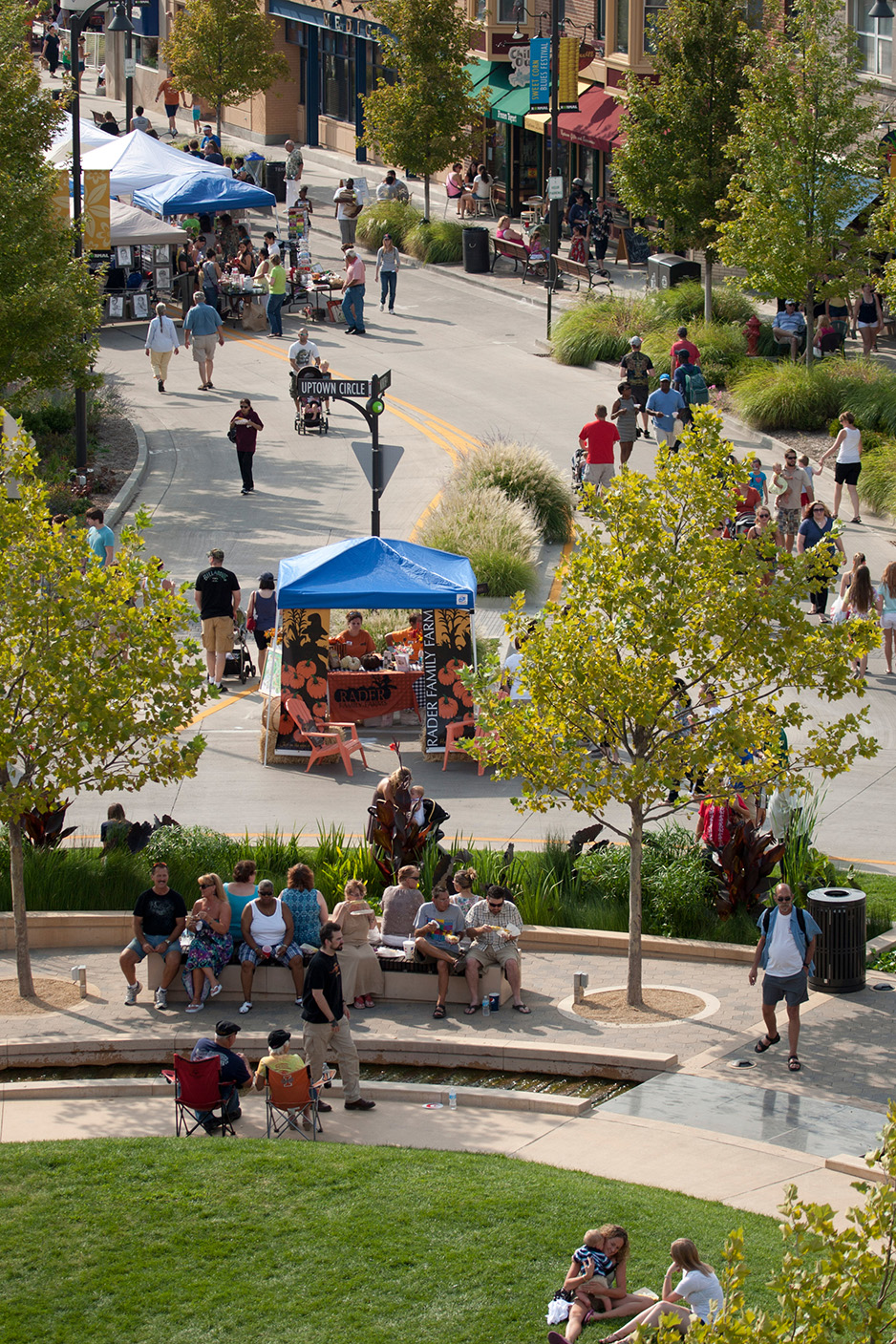
More Than a Roundabout
Unlike most modern roundabouts, Uptown Circle has a park in its center, with a landscaped berm, trees, a water feature and public seating. It’s a place to relax, take in a summer concert, wait for a train or cool your bare feet in the man-made bubbling brook.
But below the grass and pavement is where the real innovation takes place.
An underground cistern collects and holds up to 75,000 gallons of stormwater runoff from nearby streets. The water is naturally filtered through terraced bogs, then circulated into a fountain, a circular water feature and irrigation for trees and streetscapes.
Designed by Hoerr Schaudt in Chicago, the plaza — Koos calls it a “magnet for people” — has received numerous awards, including nods from the U.S. Environmental Protection Agency in 2011 and the Congress for New Urbanism (CNU).
Heading South
Normal Town Planner Mercy Davison said the next phase of development is Uptown South, a mixed-use commercial and residential project on the south side of the railroad tracks shared by Union Pacific and Amtrak. The site includes eight acres that will be connected to the existing development by an underpass, with construction beginning this summer.
The town owns most of the property in the development tract, including the former Town Hall, which now houses the Police and Parks and Recreation Departments. The connector will carry the Constitution Trail bikeway under the tracks, open onto a public amphitheater and include a drop-off for train riders and Museum visitors.
It’s too early to know what Uptown South will cost or what it ultimately will contain, Davison said, though there is talk of a Normal Public Library relocation and great interest in landing a grocery store.
History and Regional Growth
Most visitors to Uptown Circle would never guess that Normal traces its roots to an 1854 settlement called North Bloomington. The name changed soon after the state’s first public institution of higher learning — Illinois State Normal School — located there. The teacher’s training school —a “normal” school — lent its name to the village, which was incorporated in 1867.
There is much more to Normal than Uptown Circle: dozens of parks and green spaces, a sprawling Constitution Trail, a dizzying selection of distinctive dining experiences, local beer brewing, unique shopping, Redbird Arena, Braden Auditorium, the historic Normal Theatre and much more.
Charlie Moore, president and CEO of the McLean County Chamber of Commerce, calls Normal “a very big small town.”
“It’s easy to talk about Normal when you’re talking about starting or growing a business because there is a vision and forethought to make it a community that is not only attractive but one that can be competitive.
“It’s a place that meets people’s expectations and gives them the quality of life they’re looking for.”
He cites the rapid and significant growth of electric vehicle-maker Rivian, the expansion of chocolatier Ferrara Candy in Bloomington, and the first U.S. plant for Canadian ag equipment maker Brandt north of Normal as evidence that “things are going very well.”
Davison said that when Uptown plans were first unveiled, some called it “uppity town” because they thought the town was “getting too big for our britches.”
“At the end of the day, we did it, and people come from all over to see it. They can’t believe we did it.
“It’s pretty awesome.”
Read more about Uptown Normal at www.normalil.gov/1503/Uptown-Normal
